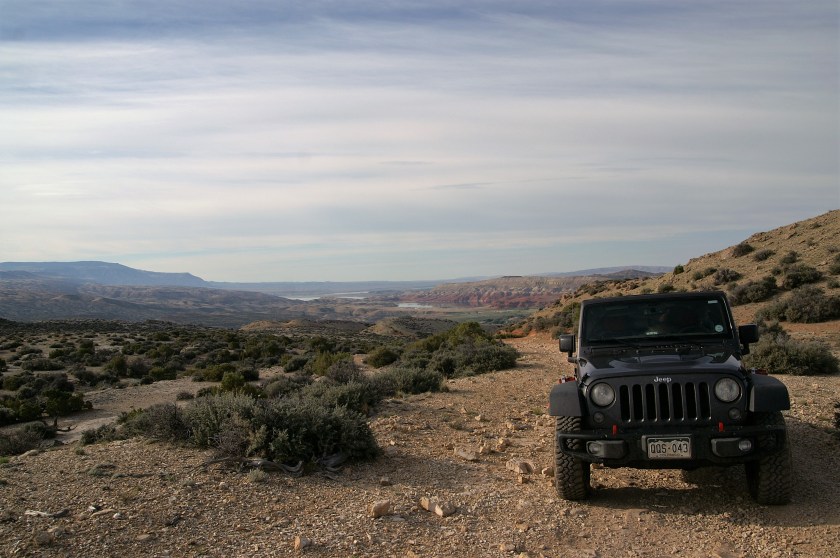Tucked away a short hike off of a four-wheel drive road in the Guanella Pass area lies the Geneva Creek Iron Fens. A rare geologic phenomenon unique to Colorado, iron fens are formed when mineral rich groundwater bubbles up from mountain springs and forms colorful ledges and terraces composed of limonite (the earth pigment used to create ochre dyes). Iron fens also produce acidic peat-forming wetlands that supports rare plant communities, including the only known occurrence of Sphagnum girgensohnii (a sphagnum moss) in Colorado. The hike to Geneva Creek Iron Fens is short, but allow plenty of time to explore the fens and the surrounding areas.
Features: Unique geologic process, rare plant community, designated Colorado Natural Area (Colorado Parks and Wildlife), historic mining buildings
Location: Guanella Pass Area, Geneva Creek Basin
Maps: National Geographic Trails Illustrated Map 104: Idaho Springs, Loveland Pass; USGS 7.5′ Montezuma, CO
Managing Agency: Clear Creek County Open Space Commission
Emergency Contact: Clear Creek Sheriff 303-679-2376. Cell reception is non-existent in this area. Carrying an emergency GPS beacon is recommended.
Distance: 2.4 miles round-trip
Time: 2-4 hours
Difficulty: Easy to Moderate. The distance is short, but it is at high elevation.
Rating: Class I. Easy hiking on a good trail. The footing is generally good when exploring the fens, but can be slick in spots and if you venture into the swampier areas, be cautious of stepping in deep, wet mud.
Starting Elevation: 10800 feet
Ending Elevation: 11400
Elevation gain: 600 feet
Permit: Not required
Vehicle Access: Four-wheel drive is required to reach the trail head. High clearance is recommended.
Gear: Waterproof boots are recommended.
Water: Bring at least 1 liter. There is abundant water, but it may be contaminated with heavy metals.
Dogs: Dogs are permitted. Keep under control to protect wildlife, livestock and fragile environment.
Season: Late Summer, Early Fall. The access road (FR119) is closed by snow in early to mid-October until late July. The trail is accessible in winter by skis or snowshoes but much of the winter the closest starting point will be the Duck Creek Picnic ground at the head of FR119 which will add 7 miles each way.
Camping: Geneva Park Campground (National Forest Service Fee Site) offering tent and RV camping is near the start of FR119. Many free dispersed sites are available along FR119. Duck Lake Picnic area is also near the start of FR119 for day use only.
Restrooms: None
Food: Al’s Pits in Grant, Colorado provides great BBQ. For a hearty lunch or breakfast, check out The Shaggy Sheep.
Nearby: Geneva Basin mining area (requires high clearance 4wd), Shelf Lake Trail, Jackwhacker Gulch, three 13,000+ foot peaks (Landslide Peak , Geneva Peak, Sullivan Mountain), and Josephine lake (the most Northern Lake in the county).
Directions to the Trailhead: From Denver:
1. Travel south on Highway 285 to the town of Grant located about 40 miles South of the C-470/Hwy 285 intersection (45 minutes)
2. Turn right on Park County Road 62 (Geneva Road/Guanella Pass) and continue for approximately 7 miles (15 minutes)
3. Turn left at Forest Road 119 (four-wheel drive only) and arrive at trailhead after 5 miles (30 minutes)
Driving Notes: FR119 is a four-wheel drive road that starts off as a graded road, but becomes rougher and narrower the farther you go. Be prepared for large puddles, stream crossings and lots of rocks. At 4.3 miles, you will pass through private property. At 5 miles cross Jackwacker creek. The trailhead is on the left just 0.1 miles beyond the creek crossing (5.1 miles total) and only has room for one or two vehicles. If you are unsure if your vehicle can do the creek crossing, there is a wide spot suitable for parking two or three vehicles just before you reach the creek. Beyond the trailhead, the road becomes a narrow shelf road with a steep grade and is only suitable for high clearance 4wd vehicles and experienced off road drivers.
Trail Description: The trail is an old 4wd road making it wide and easy to navigate. Distances are approximate.
0.0 Mile – Walk in past the locked vehicle gate
0.5 Miles – Cross a shallow pond by rock hopping or walking through the shallow water. The trail starts to climb after this crossing.
1 Mile – Unsigned fork in the road. Take the right fork. The left fork leads to another fen that is also worth exploring if you have time.
1.25 Miles – Arrive at the Iron Fens. Explore the Fens as long as you like before returning the same way you came.





Check out these videos we made at the fens. The first one was starting at a different, less accessible trailhead. It’s about a mile up the high-clearance 4wd road and requires some off-trail navigation.
and this one too!
We would love your feedback! Did you find the guide useful? Would you like more information in a trail guide? Did you get hopelessly lost following our directions? Let us know in the comments!
Happy trails!
Katie and Marybeth





































































































































































